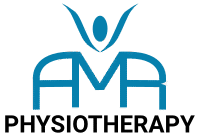Why Traditional Rehab Isn’t Enough: The Brain’s Role in Injury Recovery
Introduction: Injury Recovery Is More Than Just Muscle
If you’ve ever been injured—or know someone who has—you know just how tough the recovery journey can be. Strength, balance, and mobility are often the key pillars of rehab. But there’s one crucial element that’s frequently overlooked: the brain.
In this blog, we dive into the emerging science of neuroplasticity in injury rehab, and why neglecting the brain’s role in movement and recovery could increase your risk of reinjury.
Injuries Change More Than Just the Body
Groundbreaking research, led by Dr. Dustin Grooms at Ohio University, shows that injuries like ACL tears don’t just affect the muscles and joints—they actually reprogram how your brain functions.
For example, after an ACL tear, the brain’s communication with the knee changes. This can increase the chances of reinjury if not properly addressed during rehab. That’s where neuroplasticity in injury rehab comes into picture.

What Is Neuroplasticity?
Neuroplasticity refers to your brain’s ability to rewire itself in response to experience or injury. It’s the same process that allows stroke patients to regain movement through rehabilitation.
But neuroplasticity isn’t always helpful.
After an ACL injury, the body loses some of its proprioception—the brain’s awareness of where the joint is in space. The ligament no longer sends the same feedback, so the brain begins to rely more on vision to control movement.
The Brain After ACL Injuries: What the Research Shows
Using brain imaging, Dr. Grooms and his team discovered that athletes who’ve had ACL reconstruction show:
- Increased activity in the visual cortex
- Decreased activity in motor and sensory areas
- More activation on the opposite side of the brain
In plain terms: the brain is leaning too much on vision, and less on body awareness. That’s a red flag when it comes to reactive sports movements like cutting or jumping.
Even with strong quads and perfect technique, delayed or “noisy” brain signals can make you more vulnerable to another tear. That’s why neuroplasticity in injury rehab is vital!
Rehabbing the Brain: The Missing Link
This research tells us that traditional rehab isn’t enough. Strength and balance are vital—but we must also train the brain to reconnect with the injured limb and restore proprioception.
Cognitive-Motor Training: Rewiring the Brain
This is where cognitive-motor training enters the picture.
Dr. Grooms and his team use virtual reality (VR) and augmented reality (AR) to immerse patients in dynamic environments that challenge their brains and proprioception. One technique involves blocking vision, forcing the brain to re-engage with the body’s internal feedback systems.
If VR isn’t available, you can mimic this by:
- Closing your eyes while doing safe, controlled movements
- Performing exercises without looking at the joint
- Using mirrors for feedback
- Hopping to a marker with eyes closed to re-engage neuromotor pathways
Just like traditional strength training, these drills should start simple and progress over time.
This Isn’t Just for Athletes
While much of this research focuses on ACL injuries in athletes, the principles apply to anyone recovering from any joint injury. Whether it’s your knee, shoulder, or ankle, the brain’s connection to the body must be part of the rehab plan.
A Shift in Rehab Science
This research is part of a larger shift in how we understand musculoskeletal rehab. It’s not just about muscles and joints—it’s about the nervous system, too.
Ignoring the brain’s role may explain why reinjury rates are so high. Many athletes re-tear their ACL just 1–2 years after returning to sport. A more comprehensive rehab that trains both body and brain could drastically reduce that risk.
Final Thoughts: Movement Starts in the Brain
If you or someone you know is going through rehab, remember:
“Rehabbing the body without retraining the brain is like updating the software without checking the wiring.“
Make cognitive-motor training part of your recovery—and help future-proof your body against reinjury.
At AMR Physiotherapy, we understand that recovery doesn’t always fit neatly into busy schedules or traditional clinic visits. That’s why we’ve created a range of digital rehab plans designed to support your recovery wherever you are. Whether you’re dealing with a recent injury, ongoing pain, or post-surgical rehab, our condition-specific programs offer expert guidance, clear progression, and practical exercises you can follow at your own pace. Developed by experienced physiotherapists, each plan focuses on helping you move better, feel stronger, and regain confidence in your body, without needing to leave home. Treatment programs
If you are struggling with any MSK issue and need a consultation, you can find us in Nottingham, UK. You could give us a call on 0115 901 7867 or use our online booking system.



